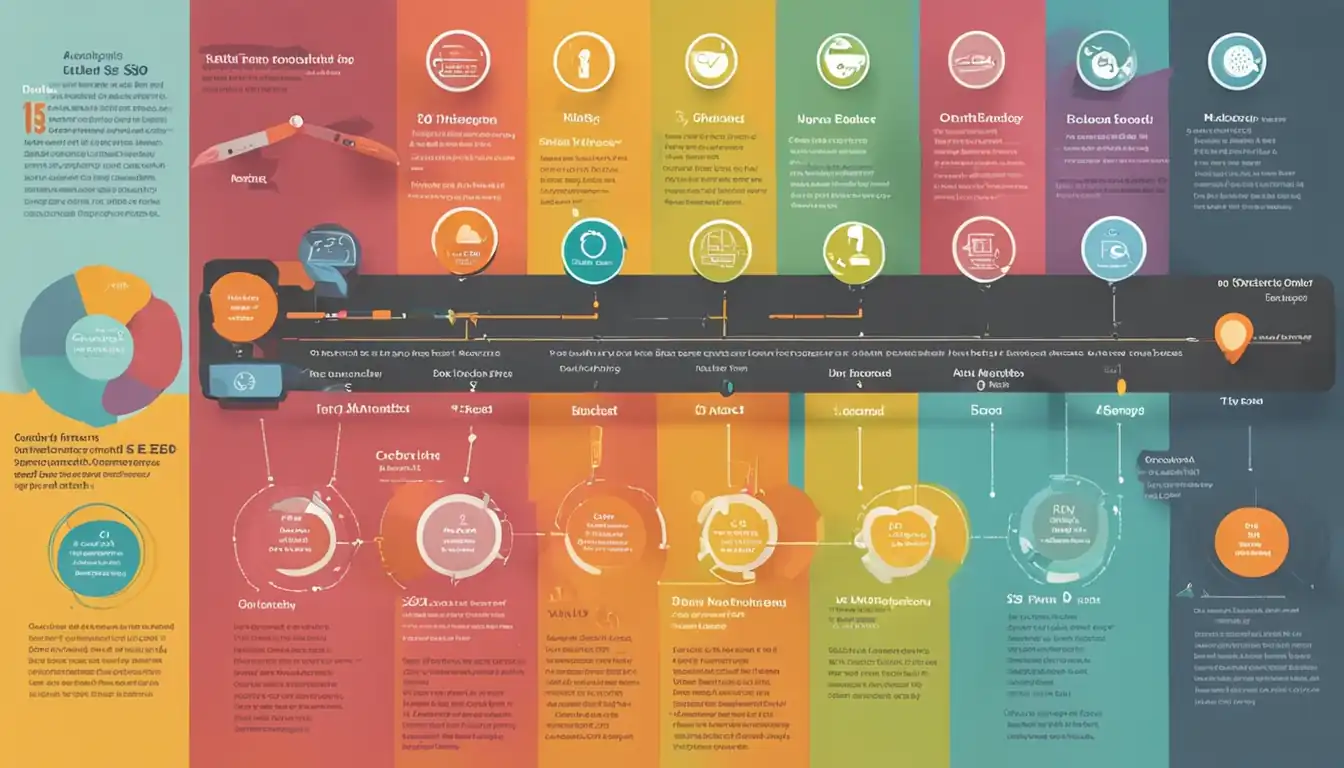Mastering Content Optimization Techniques for Enhanced SEO

Welcome to the world of content optimization! In this post, we will delve into the art of mastering content optimization techniques for enhanced SEO. Whether you're a seasoned SEO expert or just starting out, understanding how to optimize your content is crucial for improving your website's visibility and ranking on search engines. So, grab a cup of coffee, sit back, and let's explore the key strategies to take your content to the next level.
Understanding the Basics of Content Optimization
What is Content Optimization?
Content optimization is the process of improving and fine-tuning your website content to make it more visible and attractive to search engines. This involves strategically incorporating relevant keywords, optimizing meta tags, headers, and images, as well as enhancing overall readability and user experience.
Why It's Crucial for SEO Success
Content optimization plays a vital role in SEO success by helping search engines understand the relevance and value of your content. When done correctly, it can improve your website's ranking in search engine results pages (SERPs), drive organic traffic, increase user engagement, and ultimately boost conversions. In today's competitive digital landscape, mastering content optimization techniques is essential for staying ahead of the curve.
Crafting High-Quality Content
Focus on Readability and Engagement
When creating content for SEO, it is essential to focus on readability and engagement. This means writing in a clear and concise manner that is easy for readers to understand. Use headings, subheadings, bullet points, and short paragraphs to break up the text and make it more digestible. Additionally, incorporating images, videos, and infographics can help keep readers engaged and interested in your content.
Ensuring Your Content is Comprehensive
In addition to focusing on readability and engagement, it is important to ensure that your content is comprehensive. This means covering all aspects of the topic you are writing about in-depth. Conduct thorough research and include relevant statistics, examples, and case studies to support your points. By providing comprehensive content, you not only improve the user experience but also increase the likelihood of ranking higher in search engine results pages (SERPs).
Keyword Research and Utilization
Tools and Techniques for Effective Keyword Research
Keyword research is the foundation of any successful SEO strategy. By understanding the search terms your target audience is using, you can create content that resonates with them and drives organic traffic to your website.
Here are some tools and techniques to help you conduct effective keyword research:
- Google Keyword Planner: This free tool from Google allows you to research keywords, see search volume data, and get suggestions for related keywords.
- SEMrush: A comprehensive SEO tool that provides keyword research, competitor analysis, and more.
- Ahrefs: Another powerful SEO tool that offers keyword research capabilities along with backlink analysis and site auditing.
Integrating Keywords Naturally into Your Content
Once you have identified relevant keywords, it's important to seamlessly integrate them into your content. Avoid keyword stuffing, as this can harm your SEO efforts. Instead, focus on creating high-quality, valuable content that naturally incorporates your target keywords.
Remember to include keywords in key areas such as titles, headers, meta descriptions, and throughout the body of your content. This will signal to search engines what your content is about and improve its visibility in search results.
Optimizing Content Structure for SEO

Importance of Headers and Subheaders
Headers and subheaders play a crucial role in optimizing content for SEO. They not only break up the text into more digestible chunks for readers but also help search engines understand the hierarchy and relevance of the content. By strategically incorporating keywords into headers and subheaders, you can improve your chances of ranking higher in search engine results.
Using Bullet Points and Numbered Lists Effectively
Bullet points and numbered lists are powerful tools for enhancing SEO. They make content more scannable for readers, increasing engagement and reducing bounce rates. Additionally, search engines favor organized content, so using bullet points and numbered lists can help improve your site's visibility in search results. Remember to include relevant keywords within these lists to further optimize your content for SEO success.
Leveraging Meta Tags and Descriptions
Best Practices for Meta Titles
Meta titles play a crucial role in SEO as they are the first thing users see in search engine results. Here are some best practices to optimize your meta titles:
- Keep it concise: Aim for around 50-60 characters to ensure the full title is displayed in search results.
- Include target keywords: Incorporate relevant keywords to improve visibility and click-through rates.
- Be descriptive: Clearly convey the content of the page to entice users to click.
Crafting Compelling Meta Descriptions
Meta descriptions provide a brief summary of the page's content and can influence whether users click on your link. Follow these tips to create compelling meta descriptions:
- Stay within character limits: Limit meta descriptions to around 150-160 characters to prevent truncation in search results.
- Highlight unique selling points: Showcase what sets your content apart from competitors.
- Call-to-action: Encourage users to take action, such as "Learn more" or "Discover now."
Remember, meta tags and descriptions are valuable opportunities to attract clicks from search engine users. Make sure they accurately represent the content on your page and compel users to click through.
Enhancing User Experience to Boost SEO

In the realm of content optimization for SEO, enhancing user experience plays a crucial role in improving search engine rankings. By focusing on factors that make your website more user-friendly, you can significantly boost your SEO efforts.
Improving Site Speed and Mobile Responsiveness
One of the key elements of enhancing user experience is ensuring that your website loads quickly and is optimized for mobile devices. Search engines like Google prioritize websites that provide a seamless browsing experience for users across all devices. To improve site speed, consider optimizing images, minifying CSS and JavaScript files, and leveraging browser caching. Additionally, ensure that your website is responsive and displays properly on various screen sizes.
Structuring Content for Easy Navigation
Another important aspect of enhancing user experience is structuring your content in a way that makes it easy for visitors to navigate your website. This includes organizing your content into logical categories, using clear headings and subheadings, and incorporating internal links to guide users to related pages. By making it easy for users to find the information they are looking for, you not only improve their overall experience but also increase the likelihood of them staying on your site longer.
By focusing on improving site speed and mobile responsiveness, as well as structuring your content for easy navigation, you can enhance the user experience on your website and ultimately boost your SEO efforts.
Visual Optimization Strategies
Role of Images and Videos in SEO
In the world of content optimization, visual elements such as images and videos play a crucial role in enhancing SEO. Here are some key points to consider:
Engagement: Visual content tends to attract more engagement from users compared to text-only content. Including relevant images and videos can keep visitors on your site longer, reducing bounce rates.
User Experience: High-quality images and videos can enhance the overall user experience of your website, making it more visually appealing and easier to navigate.
SEO Value: Search engines like Google consider visual content when ranking websites. Optimizing images with descriptive alt text, captions, and file names can improve your chances of appearing in image search results.
Tips for Optimizing Visual Elements
When optimizing visual elements for SEO, consider the following tips:
Optimize File Sizes: Compress images and videos to reduce loading times, which can impact both user experience and SEO rankings.
Use Descriptive Filenames: Rename image and video files with relevant keywords to improve their discoverability by search engines.
Add Alt Text: Include descriptive alt text for images to provide context for visually impaired users and help search engines understand the content of the image.
Include Captions: Adding captions to images or videos can further enhance their relevance and provide additional context for users.
Implement Structured Data Markup: Use schema markup to provide search engines with more information about your visual content, increasing the likelihood of being featured in rich snippets or image carousels.
By following these visual optimization strategies, you can not only improve the user experience on your website but also boost your SEO efforts for better visibility in search engine results pages.
Conclusion
Congratulations! You've now unlocked the secrets to mastering content optimization techniques for enhanced SEO. By focusing on crafting high-quality content, conducting effective keyword research, optimizing your content structure, leveraging meta tags and descriptions, enhancing user experience, and implementing visual optimization strategies, you're well on your way to boosting your website's SEO performance. Remember, consistency is key in the world of SEO, so keep refining and optimizing your content to stay ahead of the game. Happy optimizing!